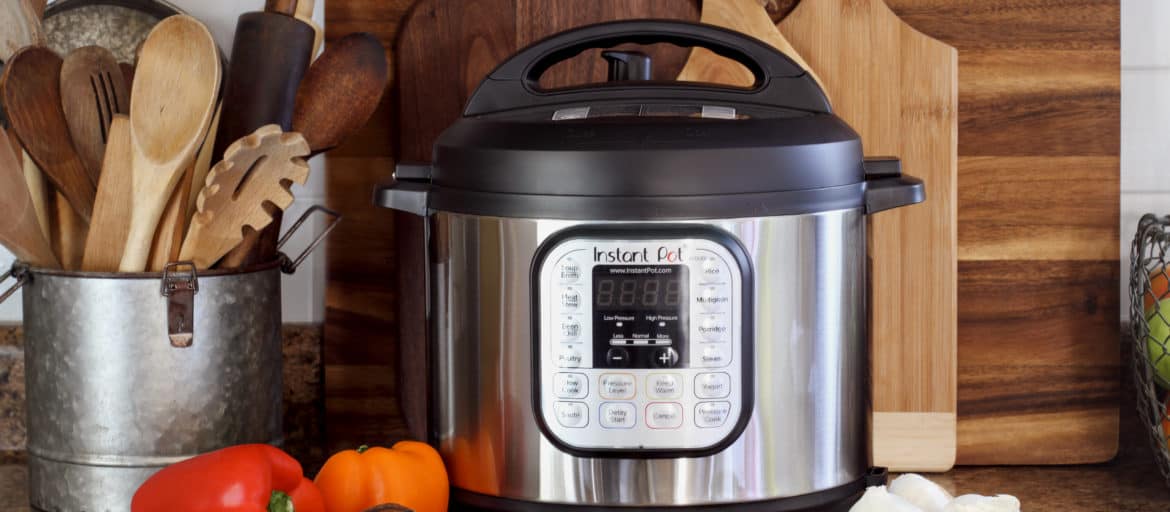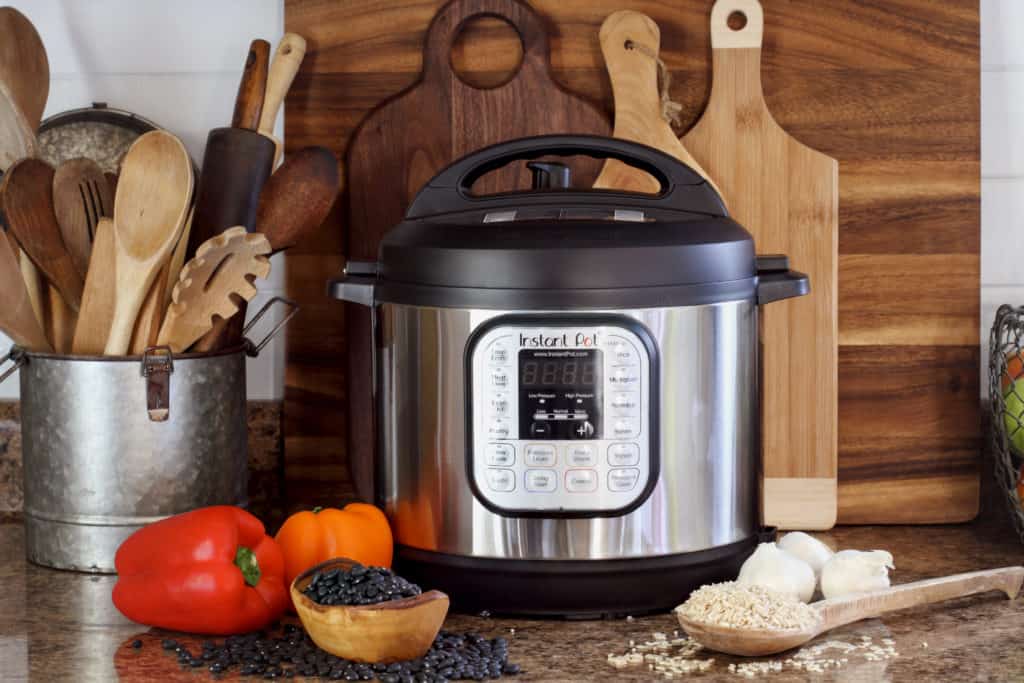
Grocery shopping on a budget has gotten increasingly harder over the years. It can seem even more difficult with a pandemic, inflation, and recession happening back-to-back. But keeping your grocery budget low is still possible, especially with a few key tips. Here’s what you need to know.
What is a realistic food budget for one person?
According to the USDA, one person on a “thrifty” spending plan should be able to spend about $230-$250 a month to feed themselves. The average food budget for a single person is around $300.
What is a realistic food budget for 2 adults?
If you’re measuring the USDA costs for a single person and multiply that by two, the most you should be spending on two adults monthly is around $600.
If you have a family of four, that skyrockets to around $1,000 a month. In other words, if you’ve been spending more money this year, you’re not alone, and the average American is doing the same.
But, there are still ways that you can lower your grocery budget and beat out the average costs.
Related Article: How To Prepare For A Recession To Protect Your Finances
How do I cut my grocery bill in half?
One of the simplest ways to cut your grocery budget is shopping for store-brand items and ditching name brands. We’ll get into more detail on this later in the article, but Consumer Reports show that name-brand items cost anywhere from 20% to 25% higher than store-brand items. So you can cut your bill almost in half from just that tip alone!
How do you grocery shop and eat healthy on a budget?
When shopping for a healthy lifestyle, first you have to ask yourself what healthy means to you. While fad diets come and go in America, many other cultures are able to eat carbohydrates, healthy fats, meats, and everything else in moderation.
So it’s possible to eat healthy on a budget, as long as you’re not restrictive about what you can and can’t eat (unless you have allergies or intolerances). And, when on a low budget, focus more on simple ingredients and recipes. Rice, beans, bananas, and beans can go a longer way than organic grapes.
Related Podcast: Eating Healthy Without Breaking The Bank
What is the cheapest food to survive on?
Regarding nutrition facts, calories per cup, and cost per pound, rice is currently the cheapest food to survive on. While brown rice can be more satiating than white rice for some people, any cheap rice works. This can be a base for many meals and can even be eaten on its own (think rice pudding).
What groceries should I buy for a week?
If you’re on a limited budget, there are still many different foods that you can purchase. Here are the top ingredients that cost less than $1 a serving or pound.
- Oats
- Rice
- Beans
- Pasta
- Potatoes
- Chicken quarters
- Flour
- Yeast
- Carrots
- Onions
- Lentils
- Canned tuna
- Bread
- Bananas
- Spinach
- Tomatoes
- Cucumbers
- Apples
- Green tea
- Garlic
- Popcorn
- Frozen fruits and vegetables
- Canned fruits and vegetables
- Celery
From this list, you can create a lot of meals or at least a lot of components to a meal. If you shop sales and keep meals simple, you could use this list to stretch your budget and spend less.
Related Video: 4 Ways To Jumpstart Your Health
What can I cook on a tight budget?
When it comes to cooking on a budget, the simpler, the better. Making pasta and topping it with sauce will be significantly cheaper than a dish with 20+ ingredients.
Here are just a few recipes that require 5 ingredients or less;
- Spinach quesadillas – Use frozen spinach to cut costs
- Oatmeal with frozen berries
- Toast with peanut butter and banana
- Spaghetti – add frozen spinach for extra nutrition
- Rice and beans – flavor with spices if you have them
- Bean salad – use beans of choice, chopped tomatoes and cucumbers, and canned corn
- Smoothies with fruits and vegetables of choice
- Mac and cheese with frozen broccoli
- Homemade pancakes
There are many other recipes that you could make for $5 or less. Pinterest and Google are great places to start with the ingredients you have on hand and can recommend other options.
Related Podcast: How Rebecca Used Minimalism to Get Out of Debt Fast
How can I lower my grocery bill?
It’s possible to lower your grocery bill and get everything you need (and even some of what you want!). Here’s how.
Plan backward
While creating a meal plan is a great way to save money, it can cause you to spend more at the store if items aren’t on sale or cost more because certain brands aren’t available.
Instead of meal planning based on what you want or what you think will be cheap, shop based on sales. Here’s how to do that and start saving hundreds.
- Look up the sales flyers of your favorite grocery stores
- Shop your pantry and see what you already have, and plan meals around what you find on sale and what you have on hand
- Be sure to account for breakfast, lunch, dinner, and snacks if you eat them
Related Podcast: How to Use Meal Planning to Slash Your Food Budget
Use coupons or grocery apps
While some people hate clipping coupons, it can be an easy way to save money, especially if there are items that you want to buy name-brand. And many stores now have “digital coupons” that you can clip through their website or app.
If you aren’t a fan of clipping coupons, that’s okay too. But everyone loves saving money, and there are easy ways to save a few dollars or earn cash back based on your grocery shopping habits.
Some great grocery and cash back apps include;
- Flipp (for sales flyers in your area)
- Target Circle
- Fetch Rewards (for cashback)
- Checkout51 (for cashback)
- Ibotta (for cashback)
- Rakuten (if you shop online)
- Honey (for coupons, shopping online, and price matching)
- Your local store app!
Related Article: 15 Ways to Lower Your Grocery Bill without Coupons
Lower your meat consumption
Meat prices have increased the most during inflation, along with coffee and toiletries. So if you’re used to eating meat with every meal, now may be the time to try and cut back.
You don’t have to become a vegetarian or vegan, but there are a few different things that you can try. They include;
- Meatless Mondays (or meatless meals on a specific day)
- Using meat as a “side,” not the main dish (like adding bacon to beans to make charro beans)
- Stretch ground meat with lentils or beans
- Stretch eggs with soft tofu
- Have one meal a day be a meatless meal, you choose which!
With the right seasonings and a little cooking know-how, you can easily cut your meat consumption and keep more money in your pocket.
Purchase regularly used items in bulk
Whether you’re a single person or part of a family of six, there are some items that you can buy and store in bulk to save you money. This includes rice, beans, pasta, or even toiletry items.
And you don’t need a lot of space either. In fact, you can create a little pantry area in any part of your home with a shelving unit or just buy an item or two in bulk each month. That way, it’s cheaper per pound or per unit, and you get to use it in more meals and recipes.
Related Podcast: How Amanda Feeds Her Family of 5 for Under $100 a Month
Shop multiple grocery stores
There are many stores that are cheap on some items and expensive on others. The best way to get the biggest deal and save the most money is by shopping at multiple grocery stores.
If the stores near you are close together, you can compare items via their sales flyers and apps (or websites) and create a game plan on where you will get each item. Also, feel free to keep a notebook with prices so you can see when regularly purchased items go on sale or fit within your budget.
This may be a pain if the stores are far apart. If that’s the case, use each week to shop at a different store and get the best deals and items there. Eventually, you’ll stockpile ingredients that you got for a discount and can use in other meals.
Shop online
Are you a spender by nature? Do you walk into a grocery store and tend to put everything in your cart, even if you don’t really need it?
Shopping online can help you stay on budget and keep you from adding unneeded items to your cart. And it also automatically tracks your items and tells you the total, so you can play around with what you want to purchase to save the most money.
Stores like Walmart allow you to shop online and get grocery pick up for free. Or you can use a delivery service like Instacart. Just be sure to tip, many people do gig work as a job or part-time side hustle and depend on them. If someone is completing a service for you, it’s customary to tip them for it.
Related Article: 11 Ways To Build Up Your Emergency Fund
Buy store brands as often as possible
Yes, sometimes name-brand items do taste better than the store-brand. But when you’re on a budget, store-brand items should be your first choice. It only makes sense to buy a name brand if you have a coupon for it, it’s on sale, or you can’t substitute it for a store brand.
If you really must have some store-brand items, try to keep them to a minimum. That way, you can still enjoy the things you love without paying too much extra for your grocery bill.
Store your food properly
America wastes a total of 108 billion pounds of food each year. And most of it can be attributed to food going bad because it wasn’t stored properly.
First, always eat your food in order. Focus on fresh produce first, and then frozen. And if you purchased items that are still in your fridge the next time you shop, add them to your meal plan so you can ensure they get eaten.
Also, wash and dry your greens before storing them in an airtight container. Pre-chop and store carrot and celery in jars with an inch or so of water. Keep items like avocados and apples in the fridge to keep them from spoiling as fast. And that’s just the tip of the iceberg. There are so many ways to store your fruits, vegetables, loaves of bread, and other food items the proper way.
Related Podcast: How a Mother of 8 Worked Her Way to Debt Freedom
Buy frozen instead of fresh
Did you know that frozen food is often fresher than the fresh food you see in stores? This is because it’s picked when ripe and flash frozen to seal in the freshness. But “fresh” items are usually picked a few weeks to months before and then stored in warehouses before being shipped to the grocery store.
While some items, like apples or peppers, taste better when fresh, there are many ways to utilize frozen fruits and veggies.
For example, use frozen berries in your smoothies instead of fresh ones. They’re usually cheaper and keep your smoothie cold. Also, frozen cauliflower rice can add sneaky vegetables to any rice dish, so the kids won’t notice! Frozen spinach can usually replace fresh spinach in any recipe, except salads.
However, if you like fresh produce, that’s okay! Just try to shop in season so you can get the best prices and the freshest items.
Make your snacks and meals when you can
This is especially important if you have children or work outside of the home. It’s much more convenient to buy pre-made snacks like chips and fruit cups that have been pre-portioned for you.
But those items add up quickly. For example, a box of 20 bags of chips has risen from around $7 or $8 in most areas to over $14 for the same items!
Instead of overpaying for convenience, try a few of these tips:
- Buy a bigger bag or box and portion out the food on your own. You can use reusable containers or bags to save even more money
- Make and freeze items like french toast, waffles, and pancakes for an easy grab-and-go breakfast
- Pre-make smoothies in mason jars or containers, so you dump them in your blender, add a splash of liquid, and blend them up in less than 5 minutes
- Mix yogurt with a splash of milk and frozen fruit for homemade yogurt pouches
- Make your own jello, pudding, and applesauce
- Buy canned fruit (in its own juice) and portion it into separate bowls
- Pop homemade popcorn and store it in airtight containers
- Prep your own “trays” of food with fruits, vegetables, and inexpensive dips
- Make your own Lunchables or charcuterie boards with the meats and cheeses you find on sale
- Make an extra batch of food when you cook, cool it, and freeze it for an easy weeknight meal when you don’t feel like cooking
While there are many other ways to save money on items you use on a regular basis, these are a great start.
Buy meals from the store instead of eating out
If you don’t have a lot of time to cook or don’t really know how it’s still cheaper to buy a frozen meal from the grocery store than it is to eat out. It’s not hard to air fry some chicken nuggets and fries but can save you 50% or more by doing it at home.
What are some meals that you love but don’t have time to make or don’t know how to make? Buy one or two prepared meals a week and store them in your freezer for when you crave them!
Related Podcast: Achieving Financial Independence Through Simple Living
Grocery shopping on a budget: It can be done!
Grocery shopping on a budget can seem daunting during times like these. But with a little research and cooking know-how, you can still save hundreds (if not thousands) over the course of a year.







